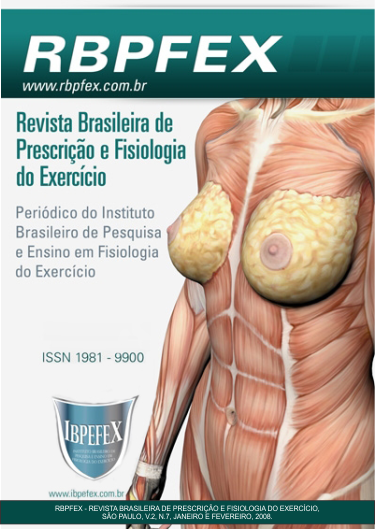Effect of the addition of swimming in the programs of physical conditioning in equines of race Mangalarga Marchador
Abstract
The objective of this work was to investigate the effects of addition of swimming in the equestrian physical conditioning programs in the mangalarga marchador division, about the charges in performance of these animals, their biochemical and physiological parameters, so that one could make a bather training plan to fit the animal. 13 horses, male and female, were used in the mangalarga marchador race, and were divided into 2 groups: the fist had 4 animals that exercised only with a whip, control group (G1) an the second group with 9 animals that exercised with a whip and swimming (G2). Every animal was used to show the bloom lactate, the frequency of cardiac force and cardiac recuperation (1minute), before and after the protocol test of each animal. Before and after the training period, the animals were measured using a hipometric balance. The results demonstrate that the addition of swimming in the training programs in the space of 1 month is insufficient improvement physically in every parameter analyzed this work, and that there was not a significant difference in the subjects, before and after training in both of the groups (G1 e G2). In conclusion, the addition of swimming in training programs did not cause any effects about the physical aerobic conditioning of these animals of G2, based on the reported indications of frequency cardiac force, frequency cardiac recuperation and in the concentration of bloom lactate force.
References
- Freitas, Eduardo Villela Villhaça. Adição de Óleo na Dieta de Eqüinos da Raça Mangalarga Marchador em Provas de Resistência. 82 p, Tese (mestrado) DZO-UFV, Viçosa, 2002.
- Ferreira, GianFranco Treinamento: Panorama Teórico – Prático Revista Toada Marchador v.1 p. 107 2003.
- Mikael, Solange Hidroterapia: Um método muito eficaz na reabilitação e no condicionamento dos cavalos atletas Revista Brasileira de Medicina Veterinária v.4 p. 6 2006.
- Foss, Merle l.; Keteyian, Steven J. Bases Fisiológicas do exercício e do esporte. 6ª. Ed. Rio de Janeiro: Guanabara Koogan, 2000.
- Baldissera, Vilmar Fisiologia do Exercício para Eqüinos. Caderno técnico da Escola Méd. Vet. Da UFMG v.19 p. 39 - 47 1997.
- Andrade, Lúcio Sérgio Princípios do Condicionamento Físico na Formação do Cavalo Atleta,2005. Disponível em http:// www.marchaweb.com.br/arquivos
- http:// www.enduro.com.br Acesso em Abril de 2005
- http:// www.globo.com.br/RJTV Acesso em Abril e Maio de 2005
- http:// www.saudeanimal.com.br Acesso em Abril e Maio de 2005
- http:// www.mundoequino.com.br Acesso em Maio de 2005
Authors who publish in this journal agree to the following terms:
- Authors retain the copyright and grant the journal the right of first publication, with work simultaneously licensed under the Creative Commons Attribution License BY-NC which allows the sharing of the work with acknowledgment of the authorship of the work and initial publication in this journal.
- Authors are authorized to enter into additional contracts separately for non-exclusive distribution of the version of the work published in this journal (eg, publishing in institutional repository or book chapter), with acknowledgment of authorship and initial publication in this journal.
- Authors are allowed and encouraged to post and distribute their work online (eg, in institutional repositories or on their personal page) at any point before or during the editorial process, as this can bring about productive change as well as increase impact and impact. citation of published work (See The Effect of Free Access).






